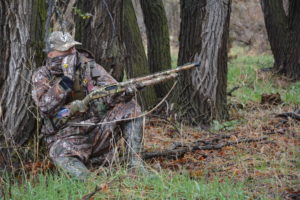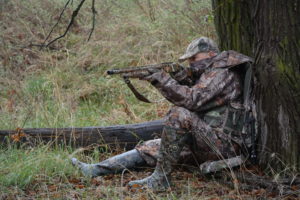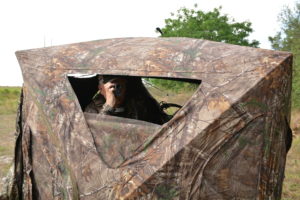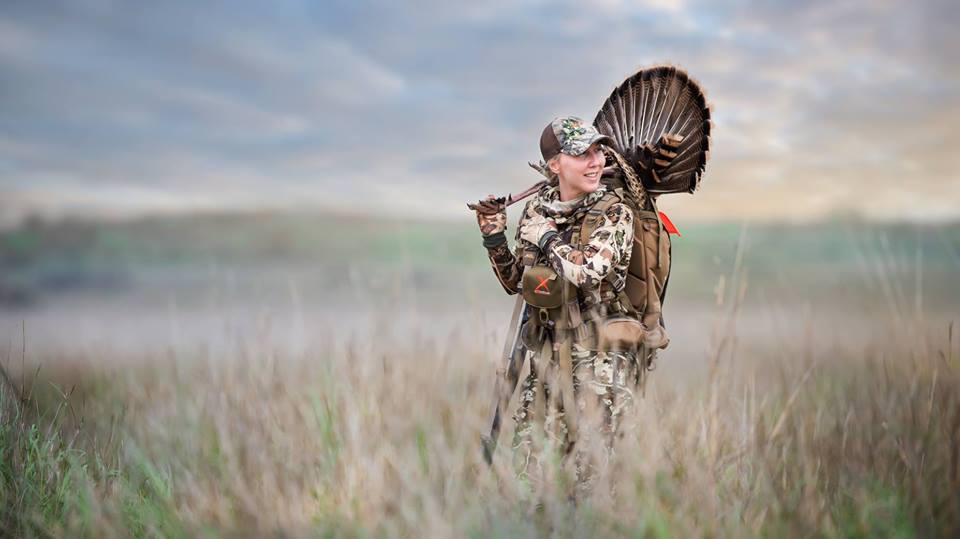Spring arrives slowly in the Northeast, especially for turkey hunters. In the deep South, the first chicks of the year have hatched before the New England seasons open and snow on opening day isn’t uncommon. Just as a colder climate requires patience, former World Champion Turkey Caller Chris Kirby recommends using the same strategy in the turkey woods. Kirby is a consummate hunter from his home state of New York, mostly a “run and gun” man in his 20’s, two decades later, he’s developed a more deliberate style with higher success.
Sit Still and Be Patient

“I guess I’m confident with my calls and the message they send, plus I don’t move around a lot,” says the President of Quaker Boy Game Calls. Often, he spends an hour in one location, especially if a gobbler answers his calls. “I keep the call running and when I get a response, I keep that tom fired up.”
Kirby cites his experience with New York’s opening day as a change in his tactics and philosophy. “I had a bird patterned and knew its movement fairly well,” he remembers. “The tom roosted high on a mountain and traveled across several razor-back ridges throughout the morning. My old self would have said, ‘go after him,’ climb those ridges and attempt to call the tom into range.”
Before daylight, Kirby and a young hunter climbed into an Ameristep blind that was used the previous season for deer hunting. The tom gobbled 1,000 yards up the mountain, so Kirby used his trademark boat paddle caller to let it know the welcome mat was out. “I just started pouring it to him and we could hear him calling,” Kirby said. “The tom went about his mourning routine and we heard him gobble periodically, yet I had the confidence we’d get a shot if we stayed there long enough.”
Patience Pays Off
 About 9:00, the duo heard spitting and drumming followed by a spectacular entrance as the fully fanned gobbler stepped into the field. Kirby had placed two bobbing-head decoys near the blind and the gobbler made a beeline for the bogus hens. “The young boy made a great shot,” raved Kirby, “yet if I had gone into the woods, we might have missed the ridge and spooked the tom. This wasn’t some kamikaze two-year old, but an experienced gobbler that was totally fooled.”
About 9:00, the duo heard spitting and drumming followed by a spectacular entrance as the fully fanned gobbler stepped into the field. Kirby had placed two bobbing-head decoys near the blind and the gobbler made a beeline for the bogus hens. “The young boy made a great shot,” raved Kirby, “yet if I had gone into the woods, we might have missed the ridge and spooked the tom. This wasn’t some kamikaze two-year old, but an experienced gobbler that was totally fooled.”
Pop-Ups Work
Kirby admits to hunting more and more from blinds as the portable pop-up technology makes the camouflaging device lighter to carry and easier to deploy. Likewise, Kirby uses decoys with discretion, most often when he knows a gobbler is in the area and plans on using his trademark, ultra-patient approach.
 Although Kirby may call more than most expert hunters, that doesn’t mean he opens up in the dark running a box like crazy. “I like to let the morning happen by itself, he says. “I wait and listen at least until the crows get going and think many hunters get too impatient during that first 20 minutes of the hunt. To me, the hunt starts when the crows fly. Birds will still be in the trees and I give a few soft yelps and then wait several minutes, listening carefully for sounds of turkeys.” Kirby always carries a snuff can caller around his neck, a boat paddle in his pocket and diaphragm in his cheek. With that arsenal, something good is bound to happen.
Although Kirby may call more than most expert hunters, that doesn’t mean he opens up in the dark running a box like crazy. “I like to let the morning happen by itself, he says. “I wait and listen at least until the crows get going and think many hunters get too impatient during that first 20 minutes of the hunt. To me, the hunt starts when the crows fly. Birds will still be in the trees and I give a few soft yelps and then wait several minutes, listening carefully for sounds of turkeys.” Kirby always carries a snuff can caller around his neck, a boat paddle in his pocket and diaphragm in his cheek. With that arsenal, something good is bound to happen.



















![The Best Deer Camp Chili [VIDEO] Deer Chili Ingredients, Tomatoes, Chili Spices](/wp-content/uploads/2015/10/Deer-Chili-Deer-Camp-Recipe-218x150.jpg)
![How to Call Elk Early in the Season [VIDEO]](/wp-content/uploads/2016/08/byers003-218x150.jpg)




![Idiots Disturb Hunter: How Would You Have Handled It? [VIDEO]](/wp-content/uploads/2015/10/DSC00110-e1474487693878-100x70.jpg)
![Albino Buck Shocked to Shed His Antlers [VIDEO]](/wp-content/uploads/2015/10/AlbinoDeer-100x70.jpg)